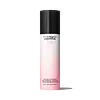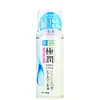What's inside
What's inside
 Key Ingredients
Key Ingredients

 Benefits
Benefits

 Concerns
Concerns

 Ingredients Side-by-side
Ingredients Side-by-side

Water
Skin ConditioningPhenyl Trimethicone
Skin ConditioningPropanediol
SolventGlycerin
HumectantDimethicone
EmollientButylene Glycol
HumectantIsopropyl Isostearate
EmollientHydrogenated Polydecene
EmollientAscorbyl Glucoside
AntioxidantTocopheryl Acetate
AntioxidantSodium Hyaluronate
HumectantPyrus Malus Fruit Extract
Skin ConditioningLens Esculenta Fruit Extract
Skin ConditioningCitrullus Lanatus Fruit Extract
Skin ConditioningHelianthus Annuus Seed Extract
Skin ConditioningCucumis Sativus Fruit Extract
EmollientHordeum Vulgare Extract
EmollientPersea Gratissima Oil
Skin ConditioningPrunus Serrulata Flower Extract
Skin ConditioningSalicornia Herbacea Extract
Skin ConditioningMalt Extract
Skin ProtectingAlgae Extract
EmollientYeast Extract
Skin ConditioningCaffeine
Skin ConditioningSodium PCA
HumectantTrehalose
HumectantSodium Lactate
BufferingSodium Polyaspartate
HumectantAcetyl Glucosamine
Skin ConditioningSucrose
HumectantTin Oxide
AbrasiveSynthetic Fluorphlogopite
Simethicone
EmollientSodium Hydroxide
BufferingCarbomer
Emulsion StabilisingDehydroxanthan Gum
Emulsion StabilisingAcrylates/C10-30 Alkyl Acrylate Crosspolymer
Emulsion StabilisingSteareth-21
CleansingPolysorbate 20
EmulsifyingHexylene Glycol
EmulsifyingCaprylyl Glycol
EmollientPropylene Glycol Dicaprate
EmollientCetyl Alcohol
EmollientGlyceryl Stearate
EmollientParfum
MaskingDisodium EDTA
Phenoxyethanol
PreservativeSodium Benzoate
MaskingPotassium Sorbate
PreservativeMica
Cosmetic ColorantCI 77891
Cosmetic ColorantCI 77491
Cosmetic ColorantCI 14700
Cosmetic ColorantCI 19140
Cosmetic ColorantWater, Phenyl Trimethicone, Propanediol, Glycerin, Dimethicone, Butylene Glycol, Isopropyl Isostearate, Hydrogenated Polydecene, Ascorbyl Glucoside, Tocopheryl Acetate, Sodium Hyaluronate, Pyrus Malus Fruit Extract, Lens Esculenta Fruit Extract, Citrullus Lanatus Fruit Extract, Helianthus Annuus Seed Extract, Cucumis Sativus Fruit Extract, Hordeum Vulgare Extract, Persea Gratissima Oil, Prunus Serrulata Flower Extract, Salicornia Herbacea Extract, Malt Extract, Algae Extract, Yeast Extract, Caffeine, Sodium PCA, Trehalose, Sodium Lactate, Sodium Polyaspartate, Acetyl Glucosamine, Sucrose, Tin Oxide, Synthetic Fluorphlogopite, Simethicone, Sodium Hydroxide, Carbomer, Dehydroxanthan Gum, Acrylates/C10-30 Alkyl Acrylate Crosspolymer, Steareth-21, Polysorbate 20, Hexylene Glycol, Caprylyl Glycol, Propylene Glycol Dicaprate, Cetyl Alcohol, Glyceryl Stearate, Parfum, Disodium EDTA, Phenoxyethanol, Sodium Benzoate, Potassium Sorbate, Mica, CI 77891, CI 77491, CI 14700, CI 19140
Water
Skin ConditioningGlycerin
HumectantCaprylic/Capric Triglyceride
MaskingDipropylene Glycol
HumectantSqualane
EmollientC20 Olefin
PPG-10 Methyl Glucose Ether
Skin ConditioningHydrolyzed Hyaluronic Acid
HumectantSodium Hyaluronate
HumectantPEG-20 Sorbitan Isostearate
EmulsifyingGlyceryl Stearate
EmollientDimethicone
EmollientStearyl Alcohol
EmollientCarbomer
Emulsion StabilisingBehenyl Alcohol
EmollientPhytosteryl/Octyldodecyl Lauroyl Glutamate
Skin ConditioningMelaleuca Alternifolia Leaf Oil
AntioxidantDisodium EDTA
Methylparaben
PreservativePropylparaben
PreservativeWater, Glycerin, Caprylic/Capric Triglyceride, Dipropylene Glycol, Squalane, C20 Olefin, PPG-10 Methyl Glucose Ether, Hydrolyzed Hyaluronic Acid, Sodium Hyaluronate, PEG-20 Sorbitan Isostearate, Glyceryl Stearate, Dimethicone, Stearyl Alcohol, Carbomer, Behenyl Alcohol, Phytosteryl/Octyldodecyl Lauroyl Glutamate, Melaleuca Alternifolia Leaf Oil, Disodium EDTA, Methylparaben, Propylparaben
Ingredients Explained
These ingredients are found in both products.
Ingredients higher up in an ingredient list are typically present in a larger amount.
Carbomer is a polymer of acrylic acid. Its main role is to create a gel consistency.
A high amount of carbomer can cause pilling or balling up of products. Don't worry, most products contain 1% or less of carbomer.
Dimethicone is a type of synthetic silicone created from natural materials such as quartz.
What it does:
Dimethicone comes in different viscosities:
Depending on the viscosity, dimethicone has different properties.
Ingredients lists don't always show which type is used, so we recommend reaching out to the brand if you have questions about the viscosity.
This ingredient is unlikely to cause irritation because it does not get absorbed into skin. However, people with silicone allergies should be careful about using this ingredient.
Note: Dimethicone may contribute to pilling. This is because it is not oil or water soluble, so pilling may occur when layered with products. When mixed with heavy oils in a formula, the outcome is also quite greasy.
Learn more about DimethiconeDisodium EDTA plays a role in making products more stable by aiding other preservatives.
It is a chelating agent, meaning it neutralizes metal ions that may be found in a product.
Disodium EDTA is a salt of edetic acid and is found to be safe in cosmetic ingredients.
Learn more about Disodium EDTAGlycerin is already naturally found in your skin. It helps moisturize and protect your skin.
A study from 2016 found glycerin to be more effective as a humectant than AHAs and hyaluronic acid.
As a humectant, it helps the skin stay hydrated by pulling moisture to your skin. The low molecular weight of glycerin allows it to pull moisture into the deeper layers of your skin.
Hydrated skin improves your skin barrier; Your skin barrier helps protect against irritants and bacteria.
Glycerin has also been found to have antimicrobial and antiviral properties. Due to these properties, glycerin is often used in wound and burn treatments.
In cosmetics, glycerin is usually derived from plants such as soybean or palm. However, it can also be sourced from animals, such as tallow or animal fat.
This ingredient is organic, colorless, odorless, and non-toxic.
Glycerin is the name for this ingredient in American English. British English uses Glycerol/Glycerine.
Learn more about GlycerinGlyceryl Stearate is a mix of glycerin and stearic acid.
It is used to stabilize the mixing of water and oil ingredients. By preventing these ingredients from separating, it can help elongate shelf life. It can also help thicken the product's texture.
As an emollient, it helps soften skin and supports barrier-replenishing ingredients.
In cosmetics, Glyceryl Stearate is often made from vegetable oils or synthetically produced.
This ingredient may not be fungal-acne safe
Fun fact: The human body also creates Glyceryl Stearate naturally.
Learn more about Glyceryl StearateSodium Hyaluronate is hyaluronic acid's salt form. It is commonly derived from the sodium salt of hyaluronic acid.
Like hyaluronic acid, it is great at holding water and acts as a humectant. This makes it a great skin hydrating ingredient.
Sodium Hyaluronate is naturally occurring in our bodies and is mostly found in eye fluid and joints.
These are some other common types of Hyaluronic Acid:
Learn more about Sodium HyaluronateWater. It's the most common cosmetic ingredient of all. You'll usually see it at the top of ingredient lists, meaning that it makes up the largest part of the product.
So why is it so popular? Water most often acts as a solvent - this means that it helps dissolve other ingredients into the formulation.
You'll also recognize water as that liquid we all need to stay alive. If you see this, drink a glass of water. Stay hydrated!
Learn more about Water